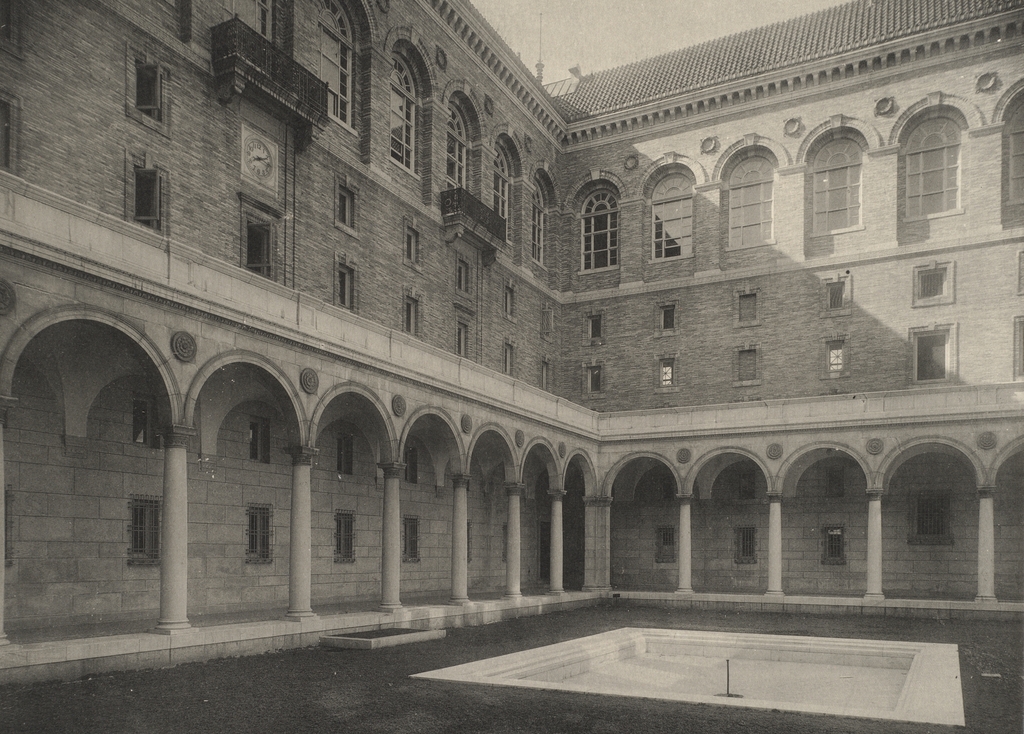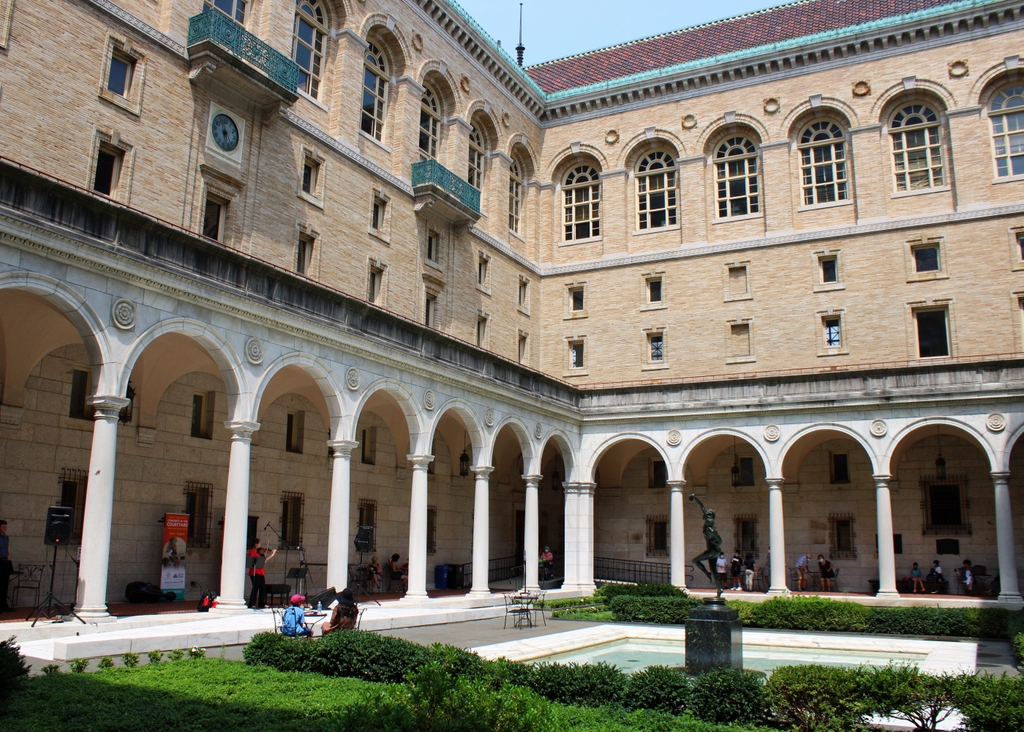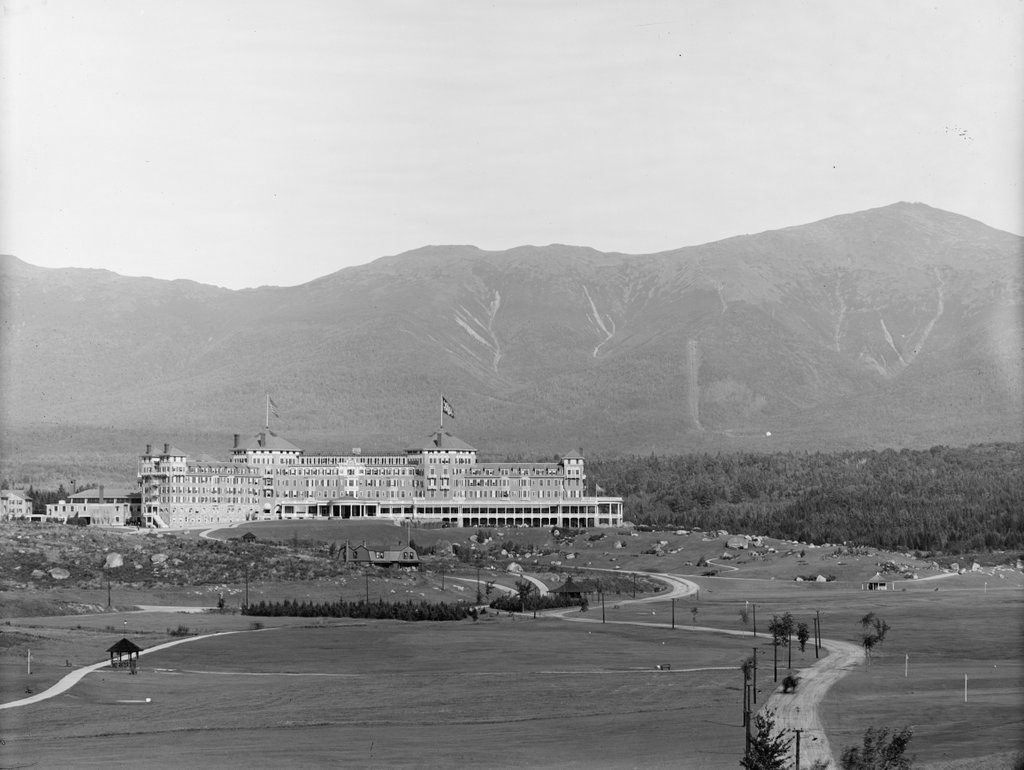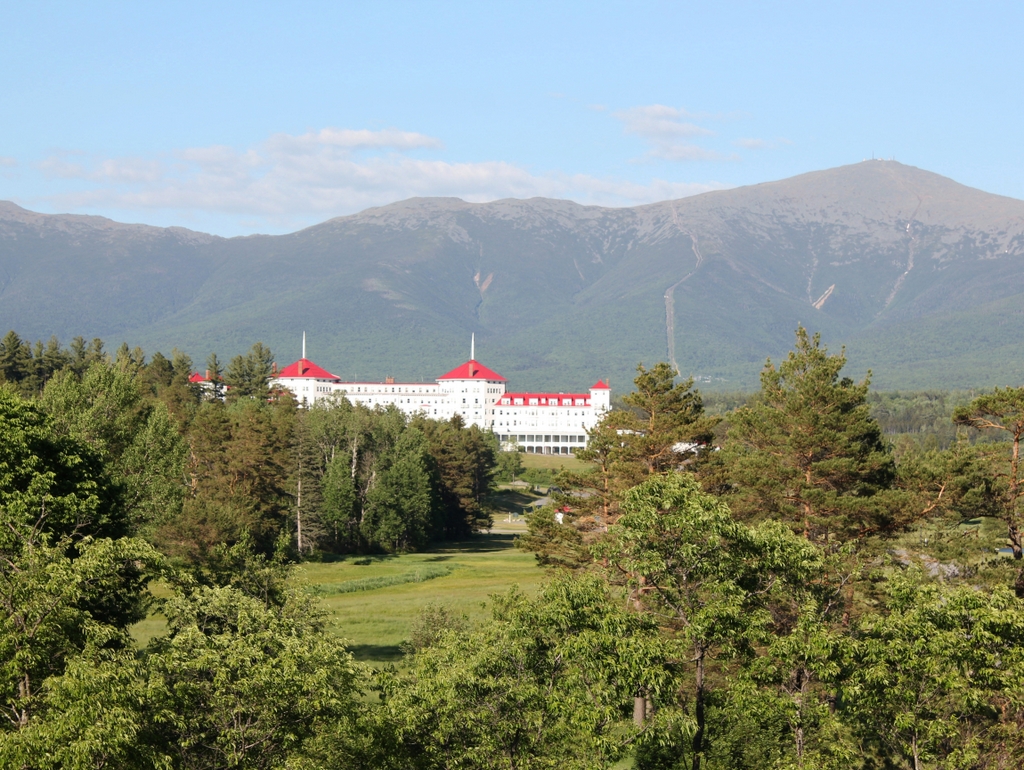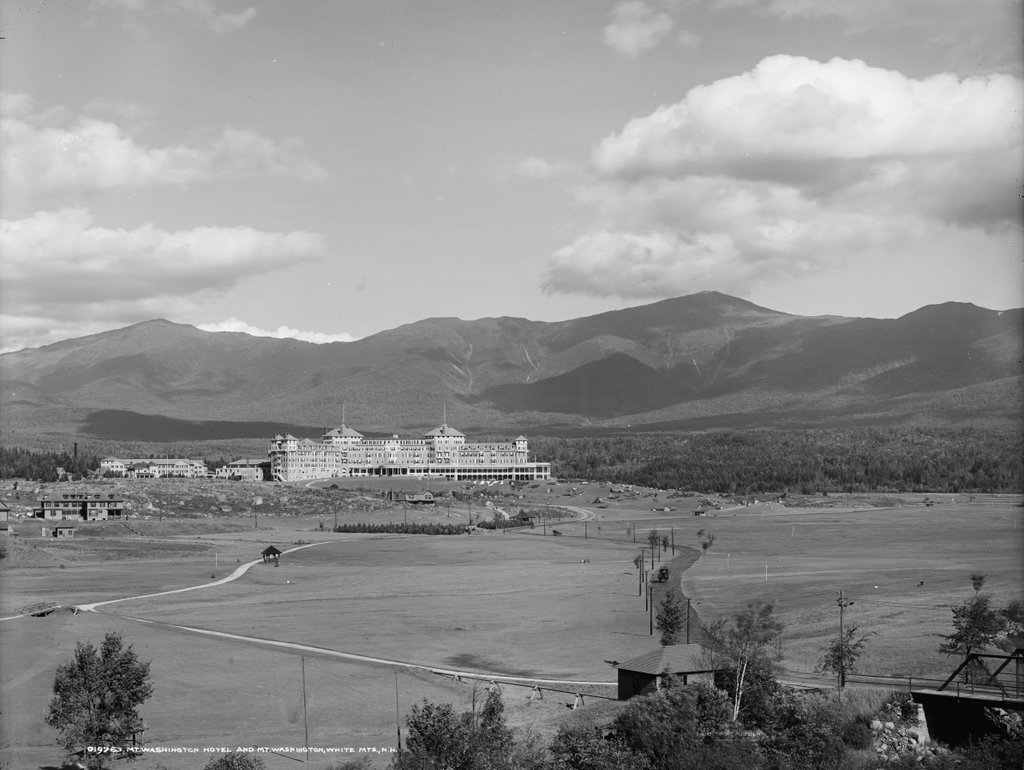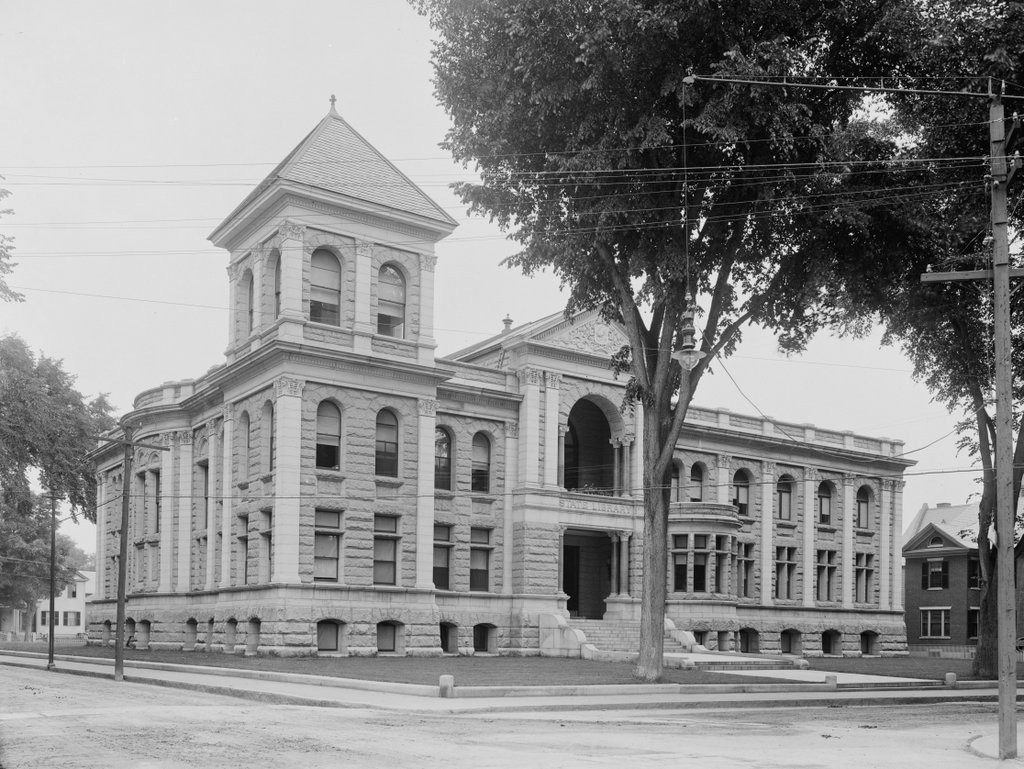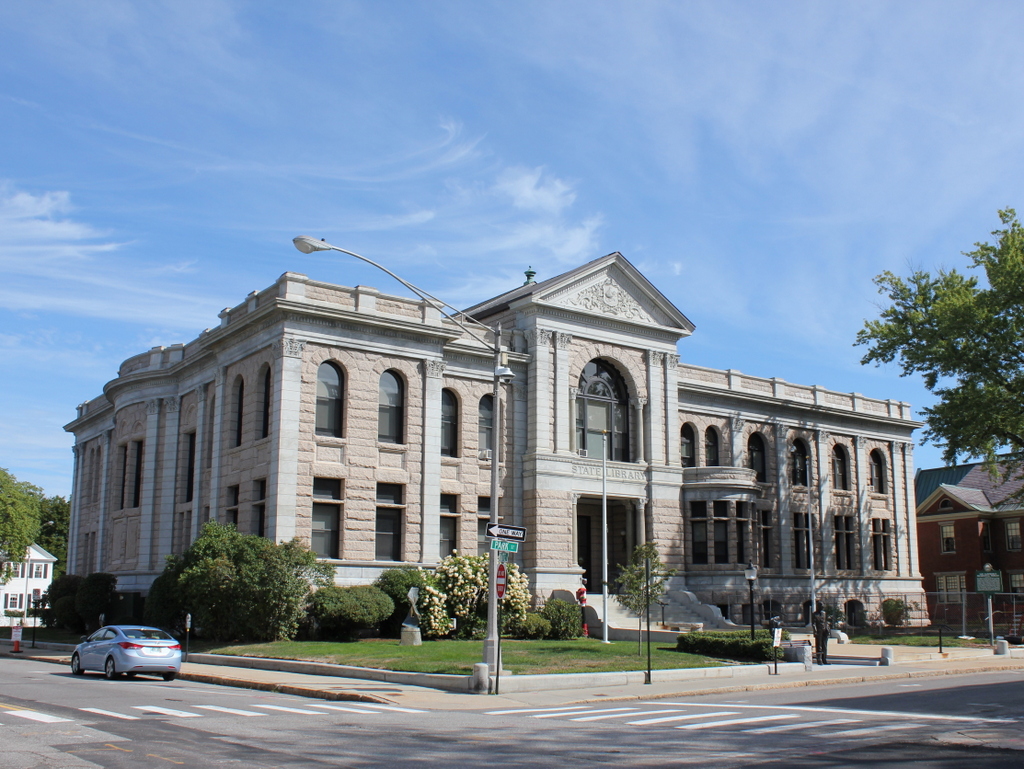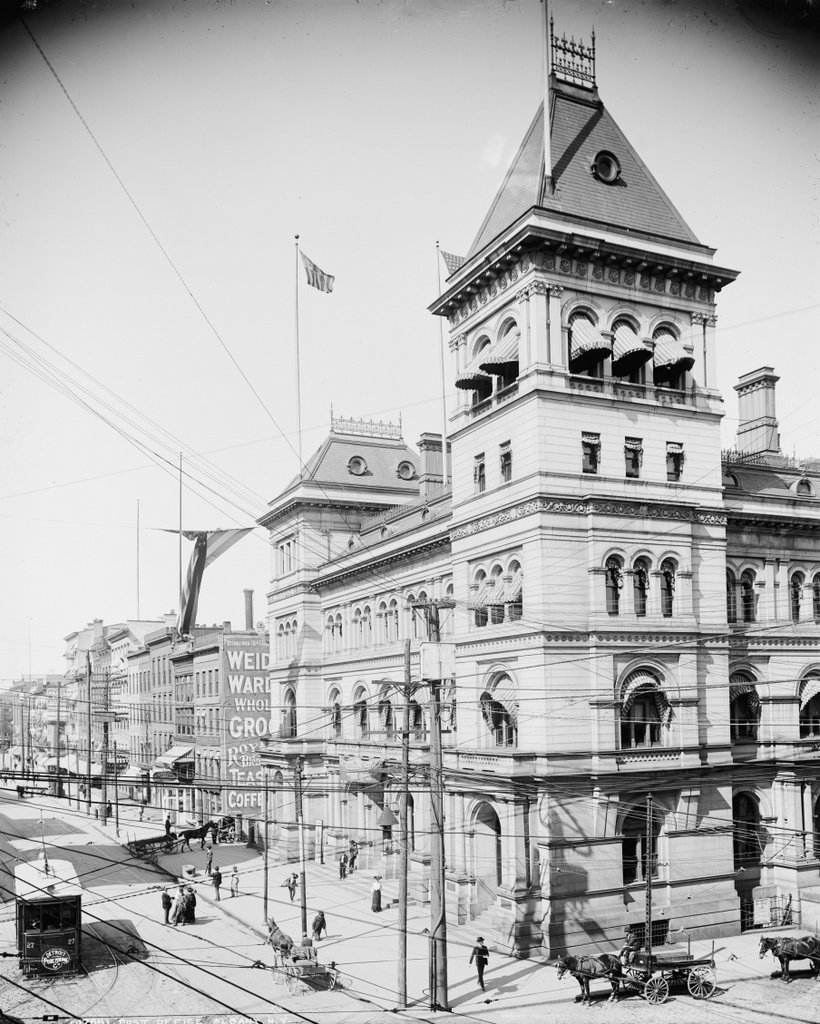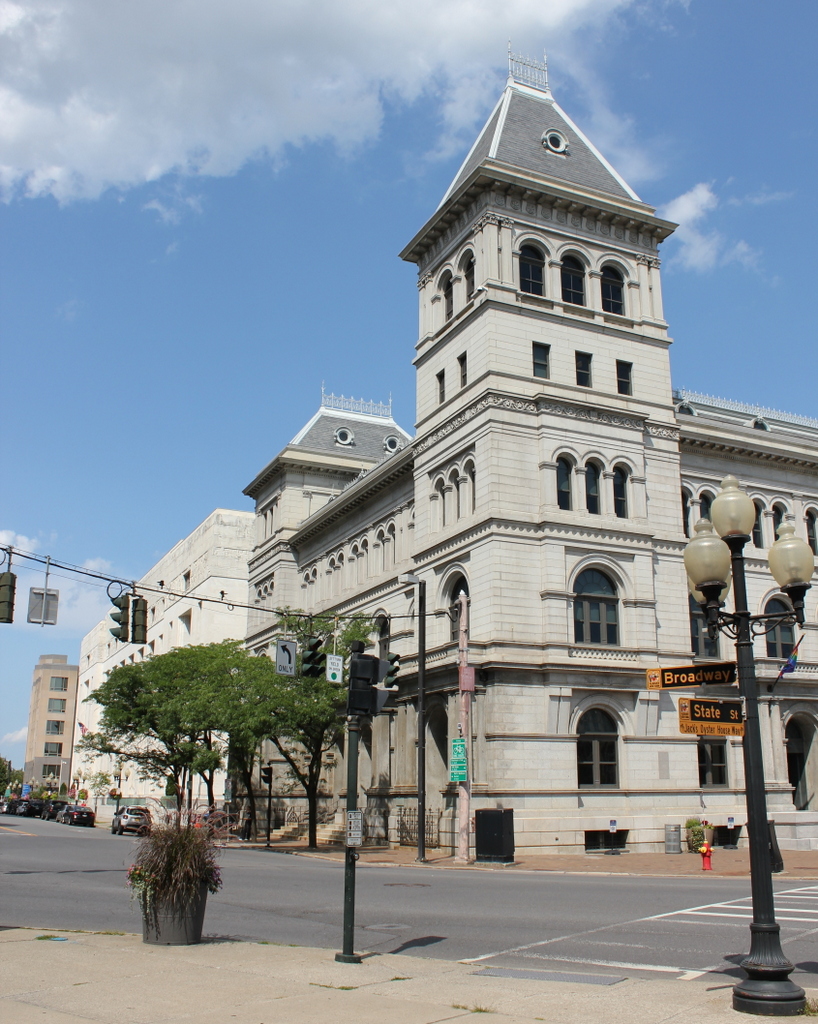The courtyard at the Boston Public Library’s McKim Building, around 1909. Image courtesy of the Boston Public Library.
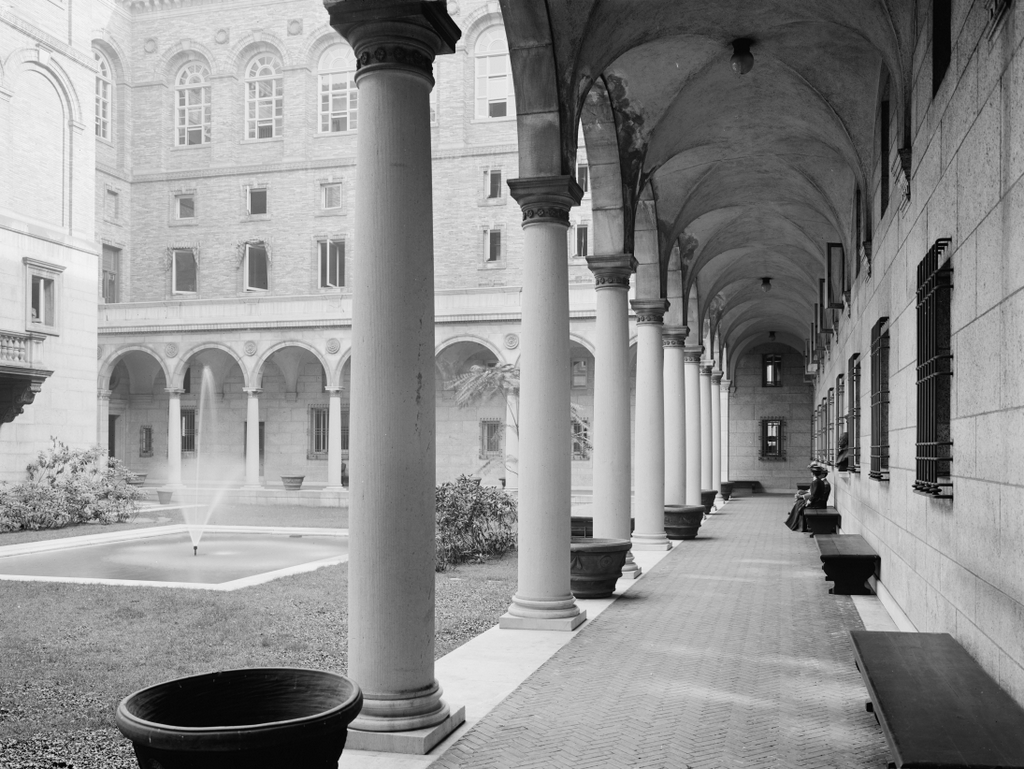
The scene in 2021:
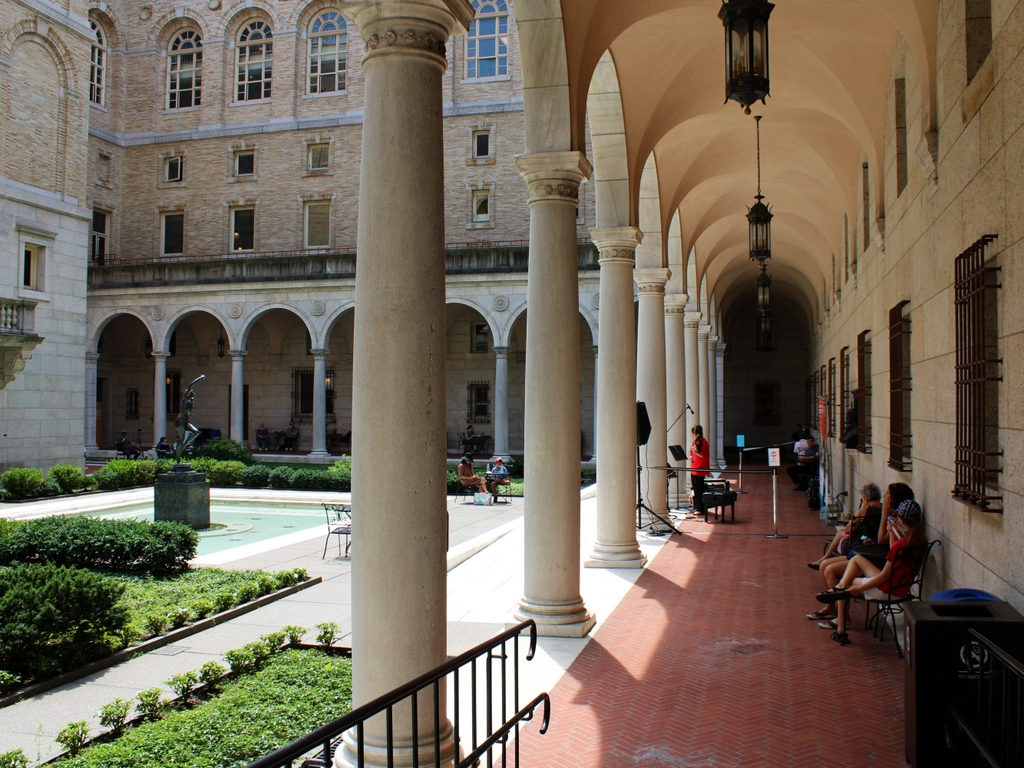
The main branch of the Boston Public Library is one of the city’s great architectural landmarks, and one of its most distinctive features is this courtyard in the middle of the building. Architect Charles Follen McKim modeled it after the Palazzo della Cancelleria in Rome, and has arcaded walkways on three sides, with a balcony on the fourth side and a pool and fountain in the center.
The library was completed in 1895, and the following year this fountain was very briefly the home of Bacchante and Infant Faun, a bronze sculpture by Frederick William MacMonnies. Cast in 1894, this statue features a nude reveler holding grapes above her head in her right hand, with a young child under her left arm. MacMonnies gave the statue to McKim as a gift, and he in turn presented it to the Boston Public Library for display here in the courtyard.
However, this decision sparked considerable controversy here in Boston, with critics objecting to both its gratuitous nudity and its apparent celebration of drunkenness. It was the subject of debate for several months leading up to its installation under the cover of darkness on the night of November 14, 1896. It was made available for public viewing two days later, with many praising its artistic merit while others denounced it as immoral.
Among the latter was the Reverend James Boyd Brady, pastor of the People’s Temple. Preaching his Sunday sermon the day before the statue was presented to the public, Brady decried it as “an infernal representation of strumpetry” and “a statue of smut and obscenity,” and declared that he would rather see a memorial to Benedict Arnold or John Wilkes Booth than “a memorial to the worst type of harlotry with which the earth was ever afflicted.” He was particularly concerned about the statue corrupting the morals of the youth, because “the innocent and the chaste will get their first intimations of vice” from this statue.
Despite—or perhaps because of—the months of controversy, the statue drew quite a crowd when it was finally put on public display on November 16. Reporting the next day, the Boston Globe noted that, at any given time, there was a crowd of around 200 people gathered here to view the statue. The newspaper went on to describe:
There were all sorts among the visitors, the connoisseur, or the man or woman whom everybody else thought must be a connoisseur because he or she presumed to compare the bronze woman’s curves with other nude celebrities, the clergyman looking possibly for a text, the stout woman with the lorgnette, the girl with her drawing materials who spends her days in front of De Chavanne’s and Abbey’s mural decorations, students of both sexes galore, down to the man who simply “knew a good shape” when he saw one.
Based on the Globe’s coverage, the opinion among the visitors seems to have been generally favorable. The article included several amusing anecdotes of reactions from various people, including one “very little man, not a connoisseur, but a practical thinker,” who did not understand what all the fuss was about. Knowing that one of the main objections was the portrayal of drunkenness, the man carefully studied the statue and concluded that the woman was not, in fact, intoxicated. He explained his reasoning:
Well, I don’t know nothing about her, but I tell you that she didn’t [get drunk]. Look at the way she’s standing. A woman couldn’t drink much wine and balance herself and the kid the way she’s doing, with her best foot up in the air. She’s all right, I tell you. I’ve seen ‘em.
The statue continued to draw crowds over the next two weeks, including one particularly busy Sunday afternoon on November 22, when an estimated ten thousand people came to see the statue between 2:00 p.m. and 6:00 p.m. As was the case on the first day, many visitors saw the statue as harmless, with the Globe quoting one woman who observed that it was no worse than the artwork on display next door at the Museum of Fine Arts. The Globe even mentioned how there were mothers who brought young children to see the statue, despite the corrupting influence that some feared it would have.
These generally favorable reactions among visitors did little to mollify the statue’s critics, though. Reverend Brady continued to be particularly vocal in his opposition. Speaking a week after the statue went on display, he feared that “Many an innocent girl, in a giddy mood, will look upon it and decide that the way to enjoyment and admiration is to throw away morality.” He went on to direct his anger at the library’s trustees, declaring:
Listen, if there is any one here that represents these trustees and art commissioners! I charge them with treason, treason, treason! And no petty treason, but high treason—treason to purity and sobriety and virtue and Almighty God.
The statue ultimately remained here in the courtyard for just two weeks, before being removed for the winter. This was not done in response to the criticism, but instead to protect it from the weather. The intent was to reinstall it in the spring, but over the winter the opposition only intensified, and McKim eventually decided to withdraw his gift in April 1897. The statue remained in storage at the library for several more months, but McKim subsequently offered it to the Metropolitan Museum of Art in New York. The museum accepted the gift, and the statue was moved out of Boston in June. For a time, it was located in the Great Hall, as shown in this earlier post, but it is now on display in the Engelhard Court, as shown in this 2023 photo:
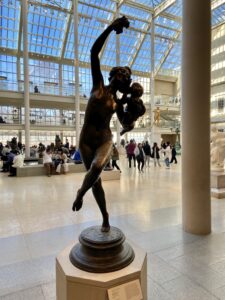
In the meantime, the first photo here in this post was taken about 13 years after all of this controversy had been resolved, and it shows the courtyard looking diagonally across from the northwest corner. The pool is visible on the left side of the scene, but it has just a simple fountain in the space where the statue had very briefly stood in November 1896.
Today, more than a century after the first photo was taken, the courtyard of the Boston Public Library remains largely unchanged. It continues to be a quiet place to read and reflect in the midst of a busy city, while also serving as a venue for everything from musical performances to weddings. However, the one major difference between these two photos is the statue in the fountain, which is a replica of the Bacchante and Infant Faun statue that had generated so much controversy. By the early 1990s, the library had begun expressing interest in returning the statue to its original location here. The Metropolitan Museum of Art balked at this idea, so the library instead commissioned this replica, which was installed in 1999.

